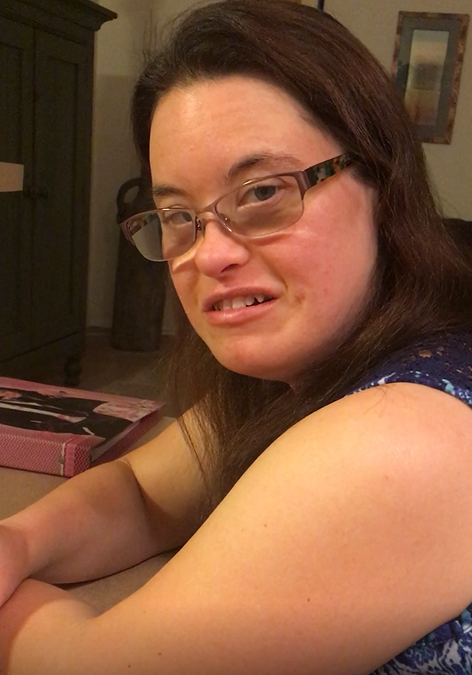I would like to share a demonstration video of me working with Jennifer, a 35ish year old woman with Down syndrome, who had never been taught to read. Jennifer was difficult to motivate. To address this, I was playful and made a game of it. We also alternated between reading, pointing, and then requesting the word to practice. This video takes place after working with her about 2 months. I taught her 2 times a week for about an hour each visit.
Here’s the backstory:
Jennifer’s mother and I had a casual conversation about educating students with intellectual disabilities (ID). We talked about the fact that a lot of progress had been made, but that disseminating the information to stakeholders had been a slow process. Jennifer’s mother shared that when Jennifer was younger, and a student in a self-contained program, that she was not able to catch on to reading. I offered to try to work with Jennifer to see if I could teach her to read.
Although her mother and I were excited about Jennifer learning to read, Jennifer did not share our enthusiasm. When I would arrive, she would answer the door in her bathrobe and tell me that she was very tired. I assured her that I would only be there for a very short time, and she would reluctantly let me in.
It was hard at first. Jennifer did not understand the concept of logographic reading, which is the starting point for teaching students with an ID to read. It is the stage where the student memorizes the “look” of the word versus the letters. In fact, knowledge of letters or phonics is not required at this stage. I worked with Jennifer for a couple of months, and you can see her reading skills went from nothing to a first grade level. Once she caught on, she started to learn words quickly.
How to teach reading to a student with an intellectual disability
- Start with word(s) the student is motivated to learn. Examples: (Mom, Dad, Vikings, Cardinals, Batman, Taylor Swift, John, Olivia, etc.) *NOTE: You do not start with the sight word list that elementary school students typically do.
- To start, pick two words that look very different. One word should have a lot more letters than the other word. For example, “Taylor Swift” and “dog”. The student memorizes which one says ‘Taylor Swift’ and which one says “dog” by looking at the word.
- Keep the words that are known and add one or two more. The number you add and how quickly this process goes is dependent on the individual. I would start by adding one at a time. Never overwhelm or they will shut down. Let students experience great success!
- The next step is using words that look similar. For example, “Taylor” and “tiger”. This stage requires the reader to look at each word more carefully. Letters are noticed as clues, and the sound that the first letter makes becomes a clue.
- Then, include a couple of sight words into the mix. Use the flashcards to make sentences using 3 of the known words. For example, “this is Taylor”. Rearrange the flashcards and read what the sentence says.
- Make the connection that the word(s) on the flashcards are in books. For example, I would give Jennifer the flashcard that says “Taylor” and ask her to find that word on the page of the book.
- Then point at the first word of the sentence on the page, the second, and third. Then, say, “You just read a page in the book!” (I really wish I had the video of Jennifer’s first experience with this-you would love it.)
Instructional Strategies Used
- I incorporate sounding out the words and the letters into our activity.
- I am playful. If it’s not fun, it’s not going to work.
- I change up what we do. She points, reads, and requests.
- I provide a lot of praise that is age appropriate.
You can see that instructional strategies are extremely important. The reason Jennifer did not learn how to read when she was younger is because she was not provided instruction that followed best practices. The good news, as you can see by the video, is that this is not difficult to teach, it simply requires an awareness of how to engage the student with meaningful instruction that addresses their disability.
This pilot helped Stephanie and I see that there is a need for high interest readers that are age appropriate. The fact that Jennifer’s reader was a Taylor Swift book made a difference in motivation. We are busy adding many more of these readers to our curriculum. Each reader comes with a flashcard for every word in the book as well as several printable activities. Our readers are non-fiction, so students build background knowledge while they improve reading skills.




